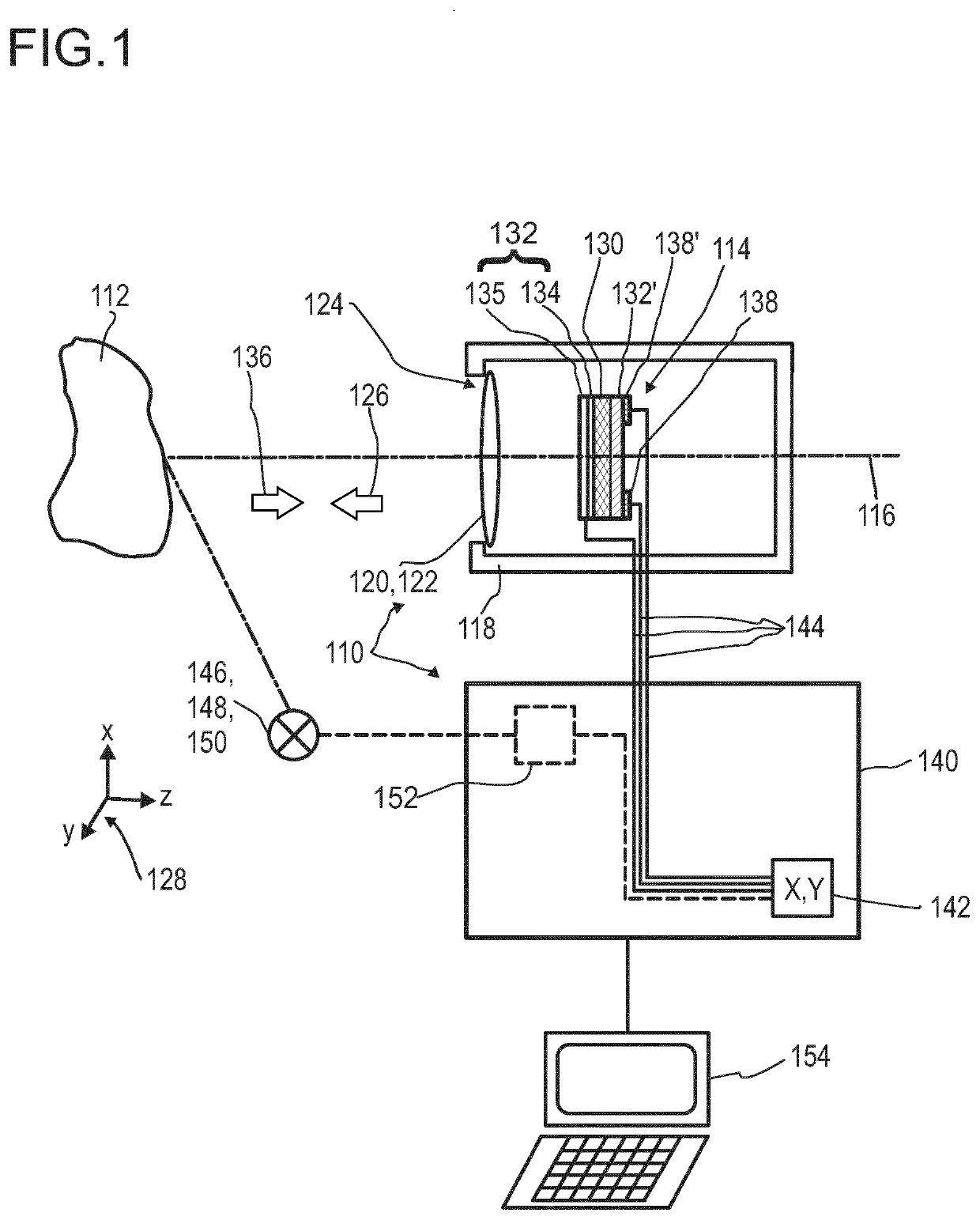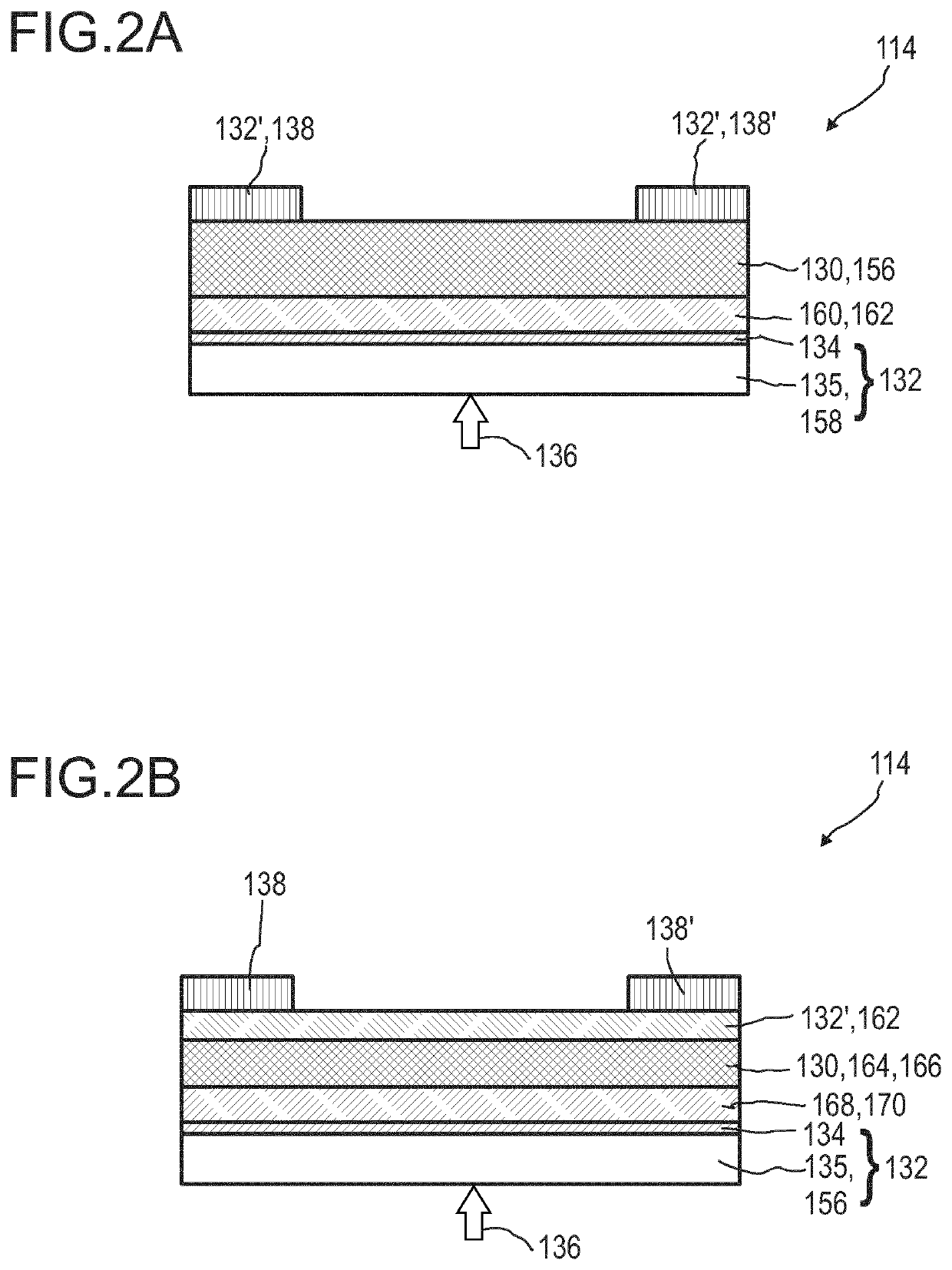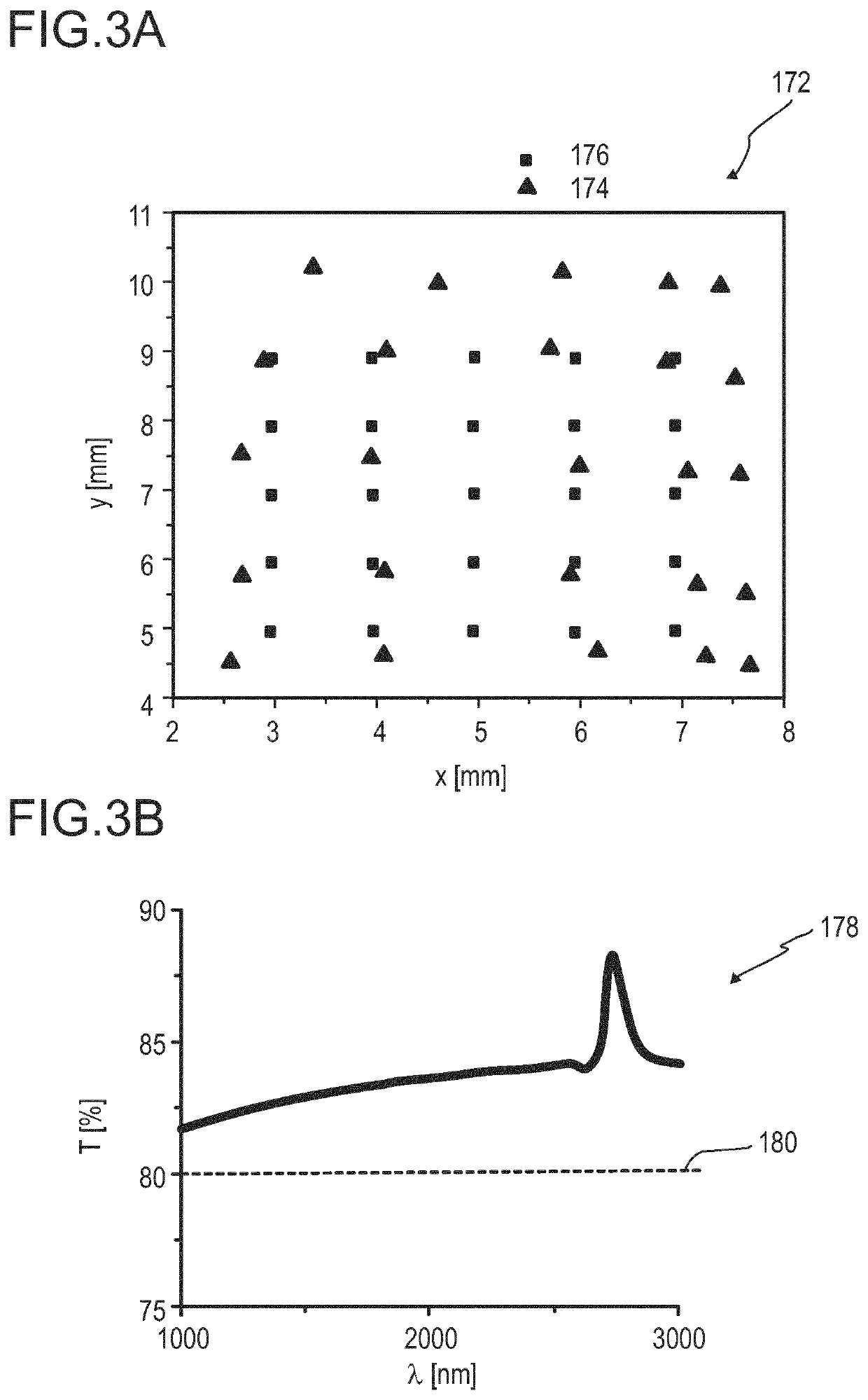Detector for an optical detection of at least one object
a technology of optical detection and detector, applied in the direction of instruments, sustainable manufacturing/processing, radio-controlled devices, etc., can solve the problems of inefficient use of transversal optical sensors, severe limitation of their applicability range, and upconversion materials, etc., to achieve sufficient signal-to-noise ratio, simple and cost-effective setup, and high intensity
- Summary
- Abstract
- Description
- Claims
- Application Information
AI Technical Summary
Benefits of technology
Problems solved by technology
Method used
Image
Examples
Embodiment Construction
[0285]FIG. 1 illustrates, in a highly schematic fashion, an exemplary embodiment of an optical detector 110 according to the present invention, for determining a lateral position of at least one object 112. The optical detector 110 may preferably be adapted to be used as a detector for a partition of the visible spectral range of 380 nm to 760 nm and / or the infrared spectral range of above 760 nm to 1000 μm, particularly for wavelengths in a spectral range of 380 nm to 15 μm, preferably of 380 nm to 3 μm, specifically of 1 μm to 3 μm. As shown below in FIG. 3B in more detail, the graphene layer 134 may, particularly preferred, exhibit a transmission of at least 80% over a wavelength range of 1 μm to 3 μm. However, other embodiments may also be feasible.
[0286]The optical detector 110 comprises at least one transversal optical sensor 114, which, in this particular embodiment, may be arranged along an optical axis 116 of the detector 110. Specifically, the optical axis 116 may be an ax...
PUM
 Login to View More
Login to View More Abstract
Description
Claims
Application Information
 Login to View More
Login to View More - R&D
- Intellectual Property
- Life Sciences
- Materials
- Tech Scout
- Unparalleled Data Quality
- Higher Quality Content
- 60% Fewer Hallucinations
Browse by: Latest US Patents, China's latest patents, Technical Efficacy Thesaurus, Application Domain, Technology Topic, Popular Technical Reports.
© 2025 PatSnap. All rights reserved.Legal|Privacy policy|Modern Slavery Act Transparency Statement|Sitemap|About US| Contact US: help@patsnap.com



